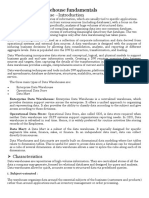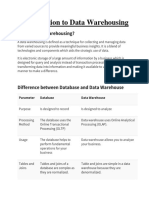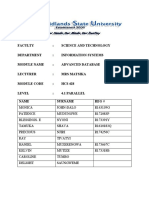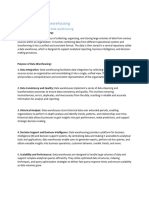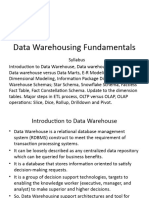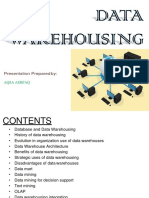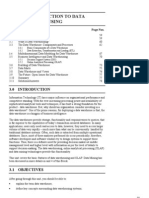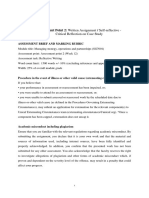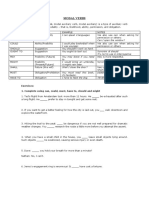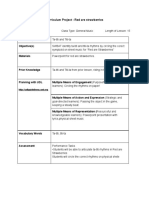0% found this document useful (0 votes)
63 views13 pagesData Warehouse and Data Mining
The document discusses data warehouses, including what they are, their key characteristics, and advantages. Specifically:
1) A data warehouse is a central repository that integrates historical and current data from across an organization for analysis and decision making. Unlike operational databases, it focuses on trends, patterns and relationships.
2) Key characteristics of data warehouses include being subject-oriented, integrated, time-variant, non-volatile, ensuring data quality, and being accessible and flexible.
3) Advantages include improved decision making, enhanced operational efficiency, competitive advantages from deeper insights, and increased revenue and profitability. Data warehouses unlock the power of historical and integrated data to drive business success.
Uploaded by
hkushwaha1011Copyright
© © All Rights Reserved
We take content rights seriously. If you suspect this is your content, claim it here.
Available Formats
Download as PDF, TXT or read online on Scribd
0% found this document useful (0 votes)
63 views13 pagesData Warehouse and Data Mining
The document discusses data warehouses, including what they are, their key characteristics, and advantages. Specifically:
1) A data warehouse is a central repository that integrates historical and current data from across an organization for analysis and decision making. Unlike operational databases, it focuses on trends, patterns and relationships.
2) Key characteristics of data warehouses include being subject-oriented, integrated, time-variant, non-volatile, ensuring data quality, and being accessible and flexible.
3) Advantages include improved decision making, enhanced operational efficiency, competitive advantages from deeper insights, and increased revenue and profitability. Data warehouses unlock the power of historical and integrated data to drive business success.
Uploaded by
hkushwaha1011Copyright
© © All Rights Reserved
We take content rights seriously. If you suspect this is your content, claim it here.
Available Formats
Download as PDF, TXT or read online on Scribd
/ 13
























